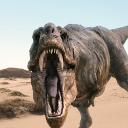Yahoo Answers is shutting down on May 4th, 2021 (Eastern Time) and beginning April 20th, 2021 (Eastern Time) the Yahoo Answers website will be in read-only mode. There will be no changes to other Yahoo properties or services, or your Yahoo account. You can find more information about the Yahoo Answers shutdown and how to download your data on this help page.
Trending News
I have an Idea but is it right?
I'm 56 yrs old and haven't studied chemistry in decades and was useless in physics. I know nothing about Astronomy.
So, I was remembering the periodic table and wonderd if the elements evolved over time....starting with one electron, proton and neutron=Hydrogen. Then Helium would have developed etc.
If the elements did evolve then the first element to appear is Hydrogen. So, where the big bang occurred there should be a large amount of Hydrogen. But, wouldn't this make it lilke a giant sun, since essentially the sun is mostly a big ball of Hydrogen. In other words, is there a gigantic sun where the Big Bang occurred.
11 Answers
- CliveLv 75 years agoFavorite Answer
The chemistry is sort of right. Yes, hydrogen came first, then everything else came from fusion of hydrogen.
But the story goes much like this. At the moment of the Big Bang and for quite a while afterward, the universe was too hot for atoms to stay together at all. Particles were created but they couldn't stick together as atoms. So it took quite a while for even hydrogen to exist and when the universe was cool enough for that, it was already very big. Then stars began to form as clumps of hydrogen, they heated up under their own gravity and nuclear fusion started to make bigger elements. The fusion of small atoms leads to energy being released and that makes stars shine. This can go on right up to producing iron. However, to produce atoms bigger than iron requires energy putting IN, so at this point a star big enough to get this far (it will need to be around 1.4 times bigger than the Sun for it to do this) will suddenly stop fusing atoms, it collapses, and then explodes as a supernova.
Which gives us the conclusion that as the Earth contains all elements up to uranium, it couldn't have formed until at least the first generation of giant stars had burned out and gone boom. It is estimated that the Sun is a third-generation star, forming 4 billion years ago in a universe already over 9 billion years old.
The tricky part is that the Big Bang was everywhere. There is no traceable place where it occurred, because when it occurred, "everywhere" WAS the place where it occurred. Now obviously we know it is expanding, which leads to the question of what it is expanding into. Nobody has a good answer to this. A lot of advanced physics tends not to make any sense in everyday world terms and this is one of those concepts.
Some evidence for the idea that the Big Bang occurred in a very tiny "everywhere" which then started expanding is the cosmic microwave background. This is essentially the echo of the bang and it is detectable as a hiss in radio telescopes wherever you point them. It's almost totally even all over the sky. In fact Penzias and Wilson who first detected it thought that this hiss coming from all over must mean there is something wrong with their telescope, but it was still there after they had checked everything (and cleaned a large amount of pigeon poop out of it).
By the way, hydrogen does not contain neutrons (or rather, the main isotope of it doesn't). A hydrogen atom is one election going around one proton. The simplified version of its fusion into helium is 4 hydrogen atoms = 1 helium atom + various subatomic particles + energy. Now just looking at the protons, neutrons and electrons, what you have is 4 electrons plus 4 protons becoming 2 electrons, 2 protons and 2 neutrons. Somewhere in the reaction, what has happened twice is that a proton and an electron have fused to become a neutron - and that's where neutrons come from.
- Ronald 7Lv 75 years ago
More or less right.
And I am 56 too
Hydrogen was the first element to be produced, then Helium and some Lithium.
The proposed particle, the Higgs Boson is what created mass and hence the gravity that coagulated Stars and Galaxies together.
Stars burn by fusion, and when their Hydrogen fuel is used up, fusion goes wild, from Helium Fusion goes through all the elements, faster and faster until it reaches Iron.
Iron can not be fused, so the ending is a Supernova, spreading the new found elements all through the cosmos.
 Source(s): We are Stardust, who knows what other elements are out there too.
Source(s): We are Stardust, who knows what other elements are out there too. - George PattonLv 75 years ago
No, completely wrong. The big bang occurred everywhere in the universe simultaneously. The big bang is the expansion and cooling of space-time, ALL of space-time. Nothing more. Hydrogen was condensed very early on yes, but so was helium and lithium. All the other elements didn't "evolve". They were produced by nuclear fusion. Mostly inside stars, but also during supernovae, neutron star collisions, etc. Although as to "big balls of hydrogen" that is one hypothesis for how supermassive black holes were formed. Rather than from a dying star, they could be the result of direct collapse. Though these are present at the hearts of most if not all galaxies. So it's not like there's just one supermassive black hole out there. There are 100's of billions, at least.
- Anonymous5 years ago
There are many answers here that don't make a lot of sense, and that's because, they don't. It's not just because only smart people can understand it, it's because smart people think that they're so much smarter than everyone else that they can understand things that can't be understood, and aren't known.
I reckon that the spot where the big bang expanded from, and there would be a spot, where the singularity was previously, there would now be a huge black hole forming, much larger than any of the other black holes out here, away from the middle.
When there is a huge amount of energy or matter in one spot, gravity just causes it to collapse, the electron stops spinning around the nucleus, and collapses, causing a huge black hole.
This will eventually be the point where all the other black holes make their way back to, in a violent big crunch, which will cause the next big bang.
This is not the most popular theory, but adheres to the first law of thermodynamics. All forms of propulsion have limits, all forms of energy have gravity, gravity has no limits.
- How do you think about the answers? You can sign in to vote the answer.
- Tom SLv 75 years ago
The Big Bang is about the expansion of space which occurs everywhere (except near gravitational fields stronger than the force of the dark energy),so there is no center. When the universe was very small there was no matter. Elements don't "evolve" like biological species.
- ?Lv 75 years ago
No - entirely wrong.
the Universe came into being (loosely this is after the inflation) with a LOT of Hydrogen, a little Helium and a tiny tiny amount of Lithium.
Since then fusion in stars has made all of the other elements.
- GuruLv 45 years ago
your assumption is correct. you are a clever man. yes, when universe was formed there was hydrogen and small amount of helium. then super giant stars formed. do you know how sun produces energy right? immense pressure and temperature in core of sun forces hydrogen atoms to fuse into one, which is knows as helium atom, helium atoms fuses to become other heavier elements like oxygen, neon, carbon, iron etc. yes you are right.
- great knightLv 65 years ago
No evolution isn't real. https://youtu.be/8DXs3B9uEuI Jesus Christ is the truth. Jesus loves you. Get a kj version bible and believe. Read Romans chapter 5. Read John chapter 1. Read Genesis.
- Gary BLv 75 years ago
NO.
Elements do not evolve, they are MADE -- inside stars.
Google SUN HYDROGEN BURN CYCLE






